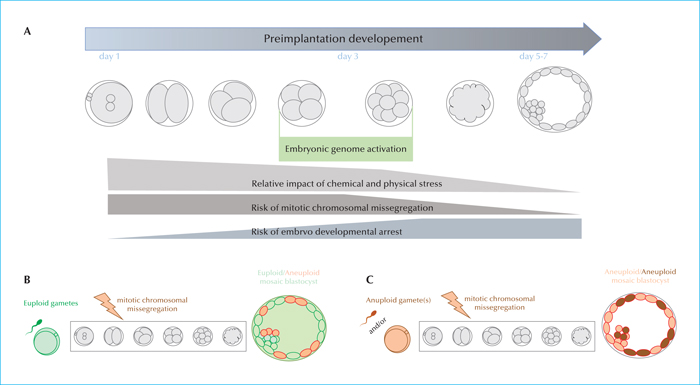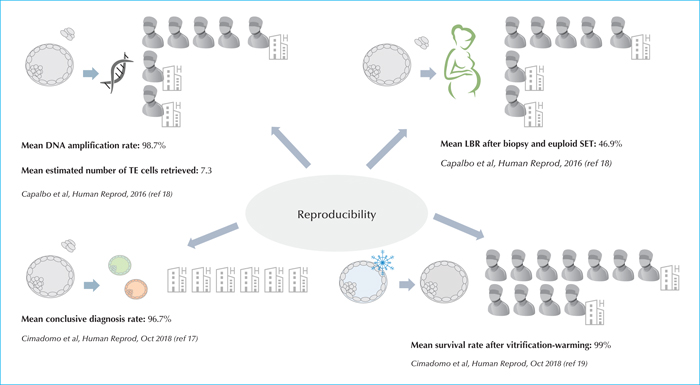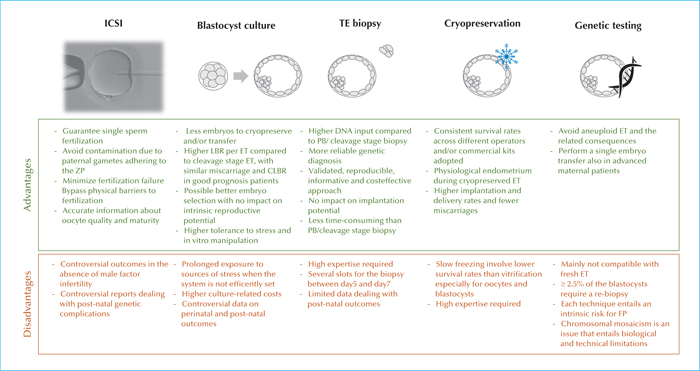Médecine de la Reproduction
MENULes préoccupations relatives aux tests génétiques préimplantatoires pour les aneuploïdies: analyse et perspectives Volume 20, numéro 4, Octobre-Novembre-Décembre 2018

Figure 1
Overview of embryo developmental arrest and chromosomal mosaicism. A) The tolerance of the embryo to chemical and physical stress is lower and the risk of mitotic missegregation higher during the early phases of preimplantation development. Nevertheless the risk of developmental arrest is minimal until the activation of the embryonic genome (in human at the 4- to 8-cell transition) when the cell cycle control is finally re-established. Most of the developmentally-incompetent embryos will arrest their development at this stage or in the later ones before the blastocyst stage. B) A mitotic chromosomal missegregation occurring in the absence of meiotic aneuploidies in both the gametes might give origin to an euploid-aneuploid mosaic blastocyst. C) A mitotic chromosomal missegregation occurring in the presence of meiotic aneuploidies in the oocyte and/or the sperm might give origin to an aneuploid-aneuploid mosaic blastocyst, which does not represent an issue for the reliability of aneuploidy testing.

Figure 2
Reproducibility of technical and clinical outcomes of trophectoderm biopsy among several operators from different IVF clinics. TE, trophectoderm; LBR, live birth rate.

Figure 3
Advantages and disadvantages of all the techniques required for the implementation of blastocyst stage preimplantation genetic testing (PGT). TE, trophectoderm; ZP, zona pellucida; ET, embryo transfer; LBR, live birth rate; CLBR, cumulative LBR; PB, polar body; FP, false positive.
